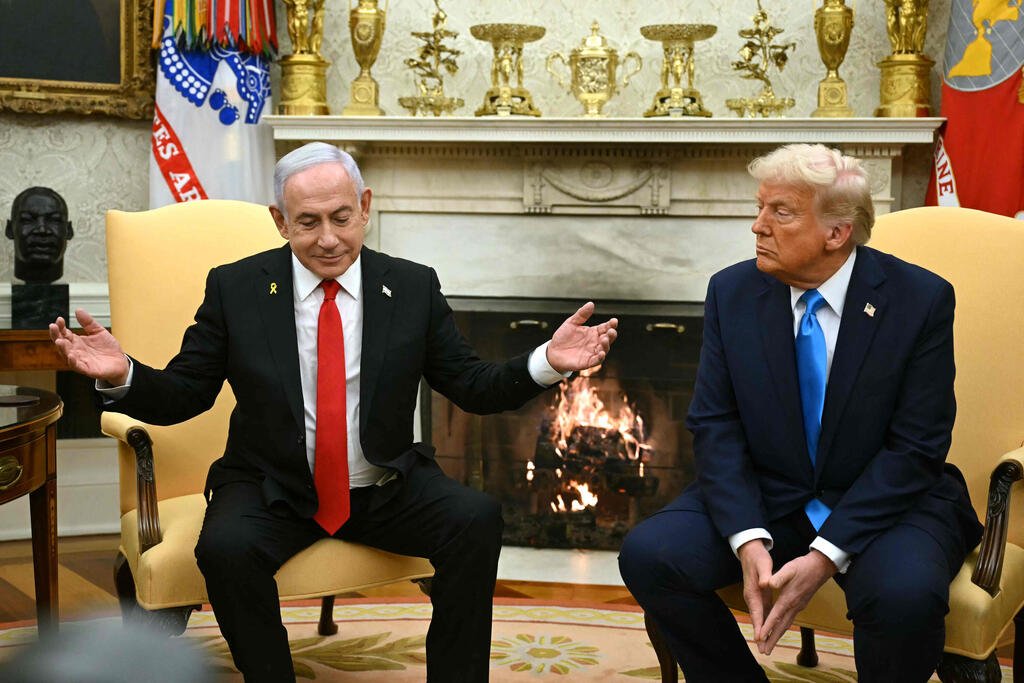Don’t let Donald Trump’s freewheeling speaking style mislead you. The U.S. president surprised many alongside Prime Minister Benjamin Netanyahu with his openness, seriousness and command of the issues, making it clear he has a structured plan for the Middle East on the path to what he calls a long-awaited peace.
A central element of Trump’s vision is the clear intention to evacuate Gaza’s residents and rebuild the coastal enclave. This is not an off-the-cuff remark or an idea whispered in his ear. However, it remains unclear whether Trump envisions a future where Gazans never return—or who exactly would populate the reconstructed territory. When asked about Israeli settlements, he said that he does not see them being built.
One striking revelation was Trump’s assertion that additional countries are willing to take in refugees, beyond Egypt and Jordan, and that they have already approached him about it. He hinted that Gulf states—including Saudi Arabia, Qatar and the United Arab Emirates—would fund Gaza’s reconstruction, emphasizing that “not us”—meaning, not the United States—would bear the high costs.
From an Israeli perspective, it was significant that Trump said a deal would be completed and the hostages returned. Netanyahu was quick to add the rest of Israel’s war objectives—delivering an implicit message to Washington—that Hamas’ military and governing capabilities must be dismantled, ensuring it can never again threaten Israel.
When asked if the Palestinian Authority would govern Gaza, Trump responded that he was unsure whether it was capable. On whether Saudi Arabia demands a Palestinian state as part of a broader deal, he said the Saudis are not making such a demand. He also effectively confirmed that removing Hamas from power is part of the plan, saying “there are complicated people there.”
Trump makes no secret of what may be his strongest motivation: setting himself apart from Joe Biden and proving that his predecessor has been ineffective—all while portraying himself as a peacemaker, not just in the Middle East but also between Ukraine and Russia. This context also shapes his remarks on Iran, which he claimed was “broke and weak when I left office” but has since grown stronger under Biden.
Trump emphasized that Iran will not obtain nuclear weapons but did not mention a military option, nor did he say that “all options are on the table”—a stance Israel has been pushing for. Netanyahu, for his part, sought to signal to his domestic coalition that Iran and Saudi Arabia are the primary concerns, while Gaza is secondary. But Trump did not fully align with him, instead engaging with reporters who largely focused their questions on Gaza. He did not highlight normalization efforts with Saudi Arabia as an imminent achievement, suggesting the issue is not yet ripe for completion.
The broader message was clear: While the U.S. may continue supplying Israel with arms, it is not seeking a war with Iran but rather pursuing a diplomatic agreement. There was no green light or tacit approval for an Israeli strike. Ahead of his meeting with Netanyahu, Trump signed a declaration tightening sanctions on Tehran—primarily as a signal to Iran that negotiations would be in its best interest.
If Netanyahu had hoped to sway Trump to his advantage, it appears the former president has a different plan—enlisting the Israeli prime minister in support of his sweeping Middle East peace initiative. This explains the warm embrace and the unusual level of respect on display. The extended preparatory meeting the day before, involving U.S. Middle East envoy Steven Witkoff and National Security Adviser Mike Waltz, was another indication that Trump’s plan is serious and well thought out.
